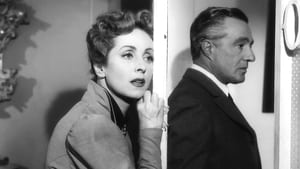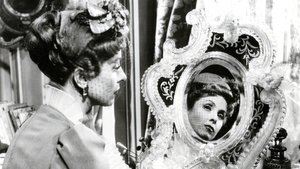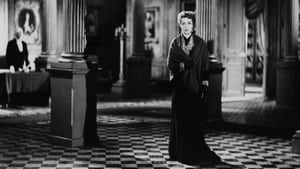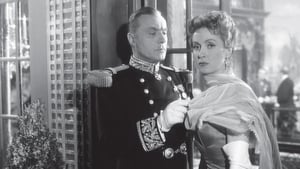Contact: [email protected]
Video Sources 0 Views
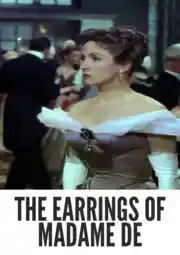
Synopsis
[ez-toc]




Introduction
In the vast tapestry of classic cinema, there exists a timeless gem that has recently undergone a transformative revival – “The Earrings of Madame de Colorized 1953.” This enchanting film, once a monochromatic masterpiece, has been reintroduced to audiences in a stunning colorized version, sparking debates about the ethics of altering artistic works and the preservation of authenticity in the digital era.
Read Media File Transfer Agreement: Terms and Conditions
Read FAQ
Brief Overview of “The Earrings of Madame de Colorized 1953”
“The Earrings of Madame de Colorized 1953” is a classic French film directed by the brilliant Max Ophüls. Originally released in black and white, the film is a captivating tale of love, deception, and fate set against the backdrop of 19th-century Paris. Starring the impeccable cast of Charles Boyer, Danielle Darrieux, and Vittorio De Sica, the film weaves a narrative web that explores the intricacies of human relationships with poignancy and elegance.
Key Takeaway: Explore the Significance of Colorization in Movies and the Charm of Old Movies
This colorized version of a cinematic classic invites audiences to reconsider the charm and aesthetic appeal of old movies. As we embark on this journey through “The Earrings of Madame de Colorized 1953,” let’s delve into the story, the actors who brought it to life, and the controversies surrounding the art of film colorization.
The Earrings of Madame de Colorized 1953: A Cinematic Masterpiece in Black and White
Brief Summary of the Film’s Story
Set in 19th-century Paris, the film follows the life of Louise, the Countess of the title, played by the mesmerizing Danielle Darrieux. The narrative unfolds as Louise sells her earrings, a wedding gift from her husband, Baron Fabrizio Donati (Charles Boyer), to pay off debts. These earrings exchange hands multiple times, setting off a chain of events that explores love, betrayal, and the unpredictable twists of fate.
Historical Context: Understanding the Era of Black and White Cinema
To appreciate the significance of “The Earrings of Madame de Colorized 1953,” one must understand the historical context of black and white cinema. In an era where color was a luxury, filmmakers relied on the power of light and shadow to convey emotion and depth. This film, with its evocative black and white cinematography, is a testament to the artistic prowess of filmmakers from a bygone era.
Key Actors and Their Stellar Performances
The cast, led by Charles Boyer and Danielle Darrieux, delivers performances that transcend time. Boyer’s portrayal of the charismatic Baron Fabrizio Donati and Darrieux’s nuanced performance as the conflicted Countess Louise elevate the film to cinematic greatness. Vittorio De Sica, in a supporting role, adds another layer of complexity to the narrative with his magnetic presence.
Bringing Colors to Life: The Art of Film Colorization
Exploring the Technique of Film Colorization and Its Controversies
The decision to colorize a classic film is met with its fair share of controversies. Purists argue that altering the original black and white aesthetics dilutes the artistic intent of the filmmaker. However, proponents of colorization argue that it breathes new life into old movies, making them more accessible and engaging for modern audiences.
The Importance of Restoration in Preserving and Reviving Old Films
While the debate about colorization rages on, there’s an undeniable need for restoration to ensure the longevity of old films. The preservation of classic cinema requires meticulous efforts to retain the original quality while enhancing it for contemporary viewing. Restoration, when done with care, can revive the magic of old movies for new generations.
Directorial Brilliance: Max Ophüls and His Timeless Vision
Examining the Auteur’s Style and Contributions to French Cinema
Max Ophüls, a luminary in French cinema, brought his signature style to “The Earrings of Madame de Colorized 1953.” Known for his elaborate tracking shots and intricate storytelling, Ophüls infused the film with a sense of grandeur that befits its aristocratic setting. His contributions to the world of cinema extend beyond this film, making him a revered figure in the history of French filmmaking.
Analyzing Max Ophüls’ Signature Film Techniques
Ophüls’ use of tracking shots and intricate camera movements adds a layer of sophistication to the storytelling. His attention to detail and the seamless blending of visuals with narrative contribute to the enduring appeal of “The Earrings of Madame de Colorized 1953.” As audiences revisit this cinematic masterpiece, Ophüls’ visionary approach continues to captivate and inspire.
A Tale of Love, Deception, and Fate: Unraveling the Narrative Threads in “The Earrings of Madame de Colorized 1953”
In-Depth Exploration of the Film’s Complex Plot
The narrative complexity of “The Earrings of Madame de Colorized 1953” is a testament to the storytelling prowess of Ophüls. As the earrings change hands, the film weaves a web of love triangles, deception, and unexpected turns of fate. Each character’s journey is intricately connected, creating a tapestry of emotions that resonates with audiences across generations.
The Protagonists and Their Multilayered Characters
The central characters, Louise and Baron Fabrizio Donati, are not mere archetypes but fully fleshed-out individuals with flaws and virtues. Louise’s internal struggles and Baron Donati’s charismatic yet flawed nature add depth to the narrative. The film’s exploration of human relationships transcends its period setting, making it a universal and timeless tale.
The Visual Power of Contrast: Symbolism in Light and Shade
Examining the Role of Contrast in Enhancing the Cinematic Experience
One of the defining features of black and white cinema is the visual power of contrast. In “The Earrings of Madame de Colorized 1953,” the interplay of light and shade enhances the emotional impact of each scene. The absence of color allows viewers to focus on the subtleties of expression and the nuances of the characters’ interactions.
The Diamond Earrings as a Symbol of Wealth, Desire, and Emotional Turmoil
The diamond earrings, a central motif in the film, serve as more than mere adornments. They symbolize wealth, desire, and the emotional turmoil that accompanies love and betrayal. The absence of color allows the audience to project their interpretations onto these symbolic elements, heightening the film’s impact.
The Cinematic Transformation: Colorizing “The Earrings of Madame de Colorized 1953”
Understanding the Artistic Decision Behind Colorizing a Monochromatic Classic
The decision to colorize a black and white classic like “The Earrings of Madame de 1953” is a bold artistic choice. It involves a careful reinterpretation of the original visuals, with the goal of breathing new life into the film while maintaining the essence of the story. The colorization process is a delicate balance between modern enhancement and the preservation of the film’s authenticity.
The Impact of Color on Revitalizing the Film’s Narrative and Aesthetic
Colorization adds a layer of vibrancy to the film, bringing the opulence of 19th-century Paris to life. The rich hues of costumes, the subtle tones of the backdrop, and the warmth of skin tones contribute to a visual feast for the audience. While purists may resist this departure from the original, others argue that colorization allows modern viewers to connect with the story on a more visceral level.
Preserving Authenticity: Balancing Modern Enhancements with Original Intentions
Challenges Faced in the Restoration Process of “The Earrings of Madame de Colorized 1953”
The restoration of classic films, especially those undergoing colorization, poses unique challenges. Preserving the authenticity of the filmmaker’s vision while incorporating modern enhancements requires a delicate touch. Striking the right balance is crucial to ensure that the film retains its original charm while adapting to the evolving tastes of contemporary audiences.
Revered or Reviled? Revisiting the Film’s Reception and Legacy
Examining Initial Reviews and Subsequent Reappraisal of the Colorized Version
When “The Earrings of Madame de Colorized 1953” first graced the screens in its newly colorized form, it ignited a flurry of opinions. Some praised the film for its fresh perspective, while others lamented the departure from the original black and white aesthetics. As time passed, a reappraisal of the colorized version brought forth nuanced discussions about the film’s enduring legacy.
The Enduring Legacy of “The Earrings of Madame de Colorized 1953”
Regardless of the debates surrounding colorization, “The Earrings of Madame de Colorized 1953” has left an indelible mark on the world of cinema. Its exploration of human emotions, coupled with the visual brilliance of Ophüls, ensures its place in the pantheon of cinematic masterpieces. The film’s enduring legacy speaks to its ability to resonate with audiences across generations.
Should Every Classic Film Be Colorized? Debating the Ethics of Altering Artistic Works
Weighing the Pros and Cons: Balancing Cinematic Accessibility with Artistic Integrity
The question of whether every classic film should undergo colorization sparks a broader debate about the ethics of altering artistic works. While colorization can make old movies more accessible to modern audiences, it also raises concerns about preserving the integrity of the filmmaker’s vision. Striking a balance between cinematic accessibility and artistic integrity becomes imperative in navigating the ever-evolving landscape of film restoration.
The Earrings of Madame de Colorized 1953 in the Modern Era: Rediscovery Through Digital Formats
The Role of Digital Formats in Facilitating Widespread Distribution of Classic Films
In the digital age, classic films find new life through various formats. The accessibility afforded by digital platforms enables audiences to rediscover cinematic treasures like “The Earrings of Madame de Colorized 1953.” The ability to watch these films in the comfort of one’s home expands their reach, introducing them to a new generation of cinephiles.
Embracing the Beauty of Diversity: Appreciating Both Versions
Acknowledging the Value of Different Interpretations
In the midst of debates over colorization, it’s essential to acknowledge the value of different interpretations. While purists may prefer the original black and white version, the colorized rendition offers a fresh perspective. Appreciating both versions allows audiences to engage with the film on multiple levels, fostering a deeper understanding of the artistic choices made by filmmakers across different eras.
Conclusion
Encouraging Viewers to Embrace Both Versions
As we conclude our exploration of “The Earrings of Madame de Colorized 1953,” the call is not to choose between the black and white or colorized version, but to embrace both. Encourage readers to experience the film in its original form, appreciating the timeless beauty of black and white aesthetics. Simultaneously, invite them to explore the colorized version, recognizing the artistic choices that breathe new life into this cinematic masterpiece.
Final Thoughts on Artistic Choices and Cinematic Impact
“The Earrings of Madame de Colorized 1953” exemplifies the potential for cinematic masterpieces to transcend time and technological advancements. It invites audiences to ponder the delicate balance between preserving authenticity and embracing modern enhancements. While colorization offers a fresh perspective on old movies, there is a unique charm and timeless beauty found in the black and white aesthetics that should not be forgotten. As we navigate the ever-evolving landscape of film restoration, let us celebrate the diversity of interpretations and the enduring magic of classic cinema.
